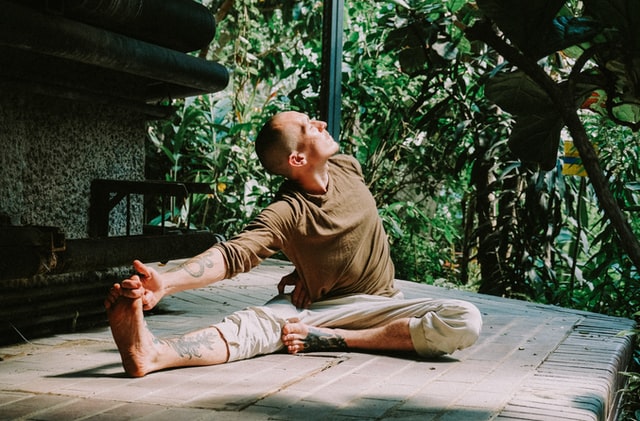“Growing up, being ‘British-Indian’ was something intimate yet, completely strange.”
After several years of flirtation, my relationship with yoga turned into a serious romance when I tried a style called Andiappan.
It was heaven. There was no competition, no frustration, no hurry. Every class took everything that I had without pushing me past my limits. I would leave the studio feeling lighter and with a little more space to recharge.
I did some research and found out that the home of Andiappan was in South India, somewhere I’d always wanted to visit. It took me about a minute to book the 11-hour flight to Chennai.
This is the part where I tell you how beautiful everything was and how much at home I felt. Well…not really.
I’ve got to admit though, when I arrived at Chennai airport, I felt like I was in Wonderland. There were plants everywhere, soft music, and images of Hindu dieties. Everything was quiet and calming. Even the staff looked like they’d just come out of two hours of meditation.
That soon ended. As I stepped away from the main gate, the reality of Chennai punched me in the face. There was noise everywhere—human, animal, and mechanical—a mist of thick smoke, herds of rickshaws, and an impossible amount of people at every turn.
I was received by Guruji Dr. Asana Andiappan and his family. He was the archetypical yoga master: an 89-year-old man of little words who didn’t seem particularly excited or disappointed about anything. Guruji was made of pure conviction—he had trouble using stairs, but woke up every morning to do headstands. He made it seem as difficult as tying your laces.
There was something else about him, a slight “mystique.” He was like a human lighthouse, guiding you calmly to the shore. He had this shine in his eyes—a serene glow that seemed to say, “You’re alright…you’re okay.”
It wasn’t all smiles, though. The school was as close as you can get to yogi military training. There was no messing around, no small talk, just yoga.
It was going to be a tough few weeks: four hours of asana, six days a week, plus the cleansing techniques, theory, meditation, and pranayama classes. Luckily for me, at that time of year, only four people were training at the college so there were several times I was face-to-face with Guruji, other yoga masters, and no one else.
The yoga itself was just the tip of the iceberg. The cleansing techniques were the hardcore stuff. I remember vividly one that involved basically flossing your nose through your mouth (you get the idea).
As days went on, the initial shock disappeared. Chennai was chaotic, but beautiful, and in spite of everything, the locals were always trying their best to help me. For the first time in my life, the way I looked was the norm, and there were no questions about my heritage—just a few curious exclamations when people on the street realised I didn’t speak Tamil.
It was the most tiresome experience of my life, but I’ve never felt so energised. My days went by in a sort of meditative state. Yoga could be defined as a practice of stillness of the mind through movement of the body. Simply put, I was completely calm no matter what I did. Small stuff like drinking a cup of tea or getting out of bed was the object of contemplation and surprise.
And so the days passed and suddenly I was ready to go home. There were photos and farewells.
As I went to receive my teacher training certificate from Guruji, I was humbly waiting for some words of wisdom that would tie up this entire experience. Guruji—who’s around five feet, by the way—looked straight into my eyes and simply said: “You should have brought a ladder.”
I laughed all the way home.
~












Read 26 comments and reply